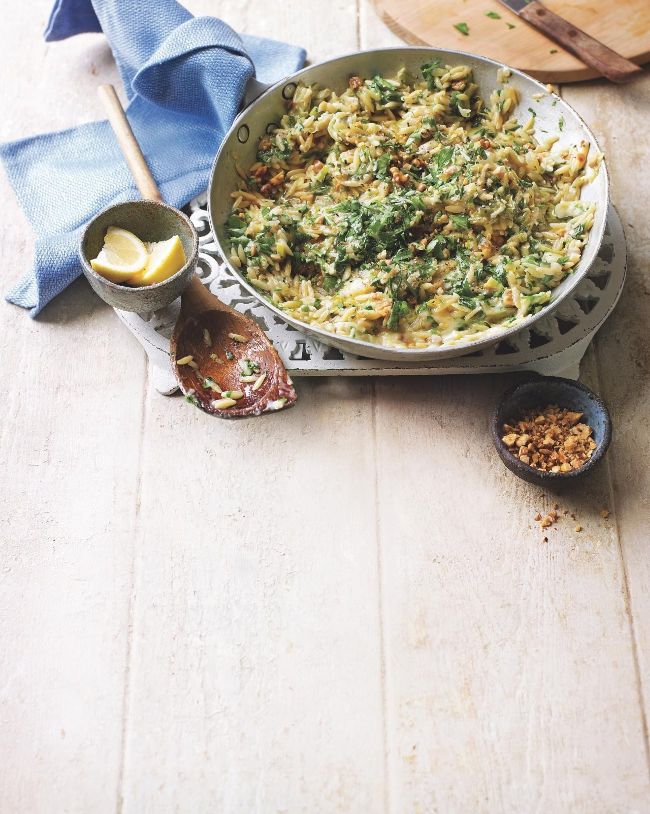GORGONZOLA the stuff of legend
It’s a champion of the Italian larder, crucial on a quattro formaggi pizza and one of the best loved blue cheeses. Susan Low travels to discover colourful tales of its origins – and we’ve created two recipes to inspire your cooking
RECIPES REBECCA WOOLLARD PHOTOGRAPHS KATE WHITAKER FOOD STYLING LOTTIE COVELL STYLING OLIVIA WARDLE
know your ingredients

Gorgonzola, leek and walnut orzotto, p76
As with many a fine food (tarte tatin, champagne, caesar salad…) the origins of gorgonzola are shrouded in myth. According to legend this classic northern Italian blue cheese was created by accident when a lovelorn dairyman neglected his evening cheesemaking duties in favour of his lover’s embrace. He tried to hide his neglectfulness by mixing the curds that had formed during the night with that morning’s milk. A few weeks later, that particular cheese developed blue veins – and tasted all the better for it.
It’s a story that’s as cheesy as gorgonzola itself and it bears an uncanny similarity to the one behind how roquefort cheese was ‘discovered’ by a similarly amorous Frenchman. I’ll leave you to draw your own conclusions.
To separate myth from fact, I paid a visit to gorgonzola producer Si Invernizzi, a modern, familyowned dairy near Milan. My guide was Marco Invernizzi, whose great-grandfather started the business, and he’s having none of the romantic tales. “The cheese of this region gets its name from the town of the same name near Milan, where one seller was so prolific that people came to associate the name of the place with the cheese.”